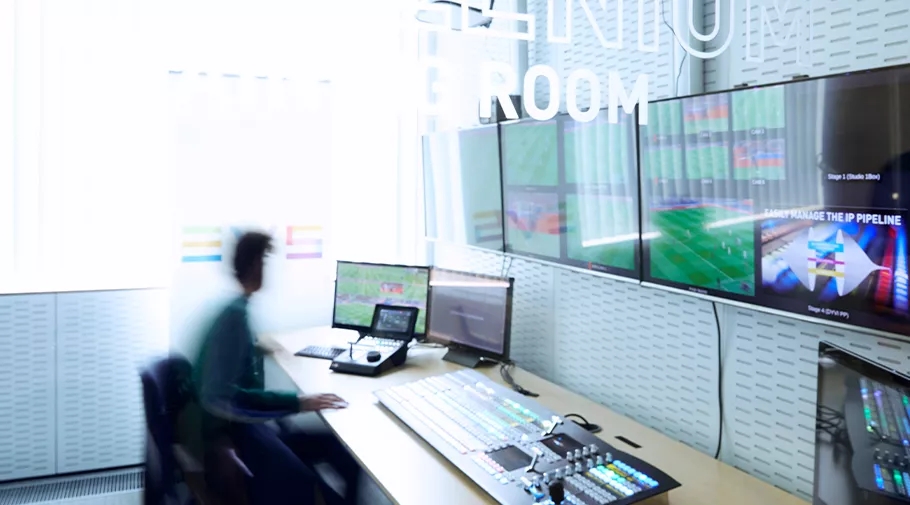Cerebrum Advanced Technical Training Tier 2
- Type

Training details
- Product Cerebrum
- Category Infrastructure
2 days (or 4 sessions of 4h each) without existing commissioning
3 days (or 6 sessions of 4h each) with commissioning
English (other languages on request)
This course is meant to support engineers who have attended the Cerebrum Basic training. It focuses on how to use and configure Cerebrum to integrate and combine various studio equipment into a coherent operational system. It also presents how to map several customer requirements to different Cerebrum functionalities and prepares engineers to perform Tier 2 support tasks.
Broadcast service engineers that have to deliver installation, commissioning and Tier 2.
Training Format
Classroom (full days) or remote training (ILT - half days)
Having attended Cerebrum Basic Training.
Have a good knowledge of studio setups and how various devices interact. But also of requirements in studios on the operational level.
Prior to the remote training, the trainee needs to have Cerebrum installed locally on his/her personal computer and enabled a demo-mode license.
Users will be asked for their preference regarding the focus of the Advanced training.
The Cerebrum Advanced training course contains the following sections:
- Follow-up on Cerebrum Basic training
• Reminder of the key concepts of Cerebrum
• Q&A related to Cerebrum Basic training
- Integration concepts
• Device integration
• Tally and UMD
• Shading
- User and group management: description of how to configure users and groups
• GUI-assignment
• User-rights
• Kiosk mode
• Windows OS integration
- Routemaster: description of the following elements
• Logical levels
• Logical sources
• Logical destinations
• How to edit the grid, to create shuffle rules and tielines
- Tally and Router configuration: description of the following elements
• Tally and related
• IP routing
• NMOS (Cerebrum as registry, DNS-SD, MDNS)
• Manual configuration (fixed IP address, protocols)
• SDP manipulation (profiles)
- Control Interfaces
• Mapping to levels and devices
- Usage of SNMP: description of the following elements
• SNMP devices prerequisites
• SNMP devices severities
• SNMP templates/agent
• SNMP traps
- Designer introduction: description of use of the designer tool
• Designer application UI overview & walk through
• Basic concepts: panels/forms, macros, hardware panel forms, templates, UI packages
• Personalization vs Customization
- Advanced troubleshooting
• File system
• Logging options
• Filtering (Alarm-log and Audit-trail configuration)
• Protocols
- Panel options
• hardware panels (how to setup and configure)
• Rich clients and web clients
- Hands-on exercises: together we will create some exercises that help understanding the approach of Cerebrum towards controlling and monitoring a studio setup containing several devices.